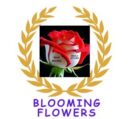# Blood Flower Milkweed: A Complete Guide
Blood Flower Milkweed, also known as Asclepias curassavica, is a beautiful plant that attracts butterflies. This tropical milkweed is native to South America. It has bright red and orange flowers that stand out in any garden. Let’s dive into the details of growing and caring for Blood Flower Milkweed.
## What is Blood Flower Milkweed?
Blood Flower Milkweed is a perennial plant. It is famous for its vibrant flowers. The plant belongs to the Asclepias family. It is commonly found in tropical and subtropical regions.
### Other Names
– Scarlet Milkweed
– Tropical Milkweed
– Silkweed
## Why Grow Blood Flower Milkweed?
Growing Blood Flower Milkweed has many benefits. Here are a few reasons to plant it in your garden:
### Attracts Butterflies
Butterflies love Blood Flower Milkweed. Monarch butterflies, in particular, are attracted to it. The plant provides nectar for adult butterflies. It also serves as a host plant for caterpillars.
### Easy to Grow
This milkweed variety is easy to grow. It adapts well to different soil types. It can thrive in both sunny and partially shaded areas.
### Beautiful Flowers
The flowers of Blood Flower Milkweed are stunning. They have bright red and orange colors. These flowers can brighten up any garden.
### Low Maintenance
Blood Flower Milkweed requires minimal care. It is drought-tolerant once established. This makes it a great choice for busy gardeners.
## How to Grow Blood Flower Milkweed
Growing Blood Flower Milkweed is simple. Here are the steps to get you started:
### Choose the Right Location
Select a sunny spot in your garden. Blood Flower Milkweed thrives in full sun. It can tolerate partial shade but will bloom best in full sunlight.
### Prepare the Soil
Blood Flower Milkweed prefers well-drained soil. If your soil is heavy, mix in some sand or compost. This will improve drainage and fertility.
### Planting Seeds
You can grow Blood Flower Milkweed from seeds. Here’s how:
1. **Soak the Seeds:** Soak the seeds in warm water for 24 hours. This helps to soften the seed coat.
2. **Plant the Seeds:** Sow the seeds directly in the garden. Plant them about 1/4 inch deep.
3. **Water Well:** Water the soil gently after planting. Keep the soil moist until the seeds germinate.
### Transplanting Seedlings
If you started seeds indoors, you can transplant the seedlings. Here’s how:
1. **Harden Off Seedlings:** Gradually expose the seedlings to outdoor conditions. This process is called hardening off.
2. **Prepare the Planting Site:** Choose a sunny spot and prepare the soil.
3. **Transplant the Seedlings:** Plant the seedlings at the same depth they were growing in the pots.
4. **Water Well:** Water the seedlings thoroughly after transplanting.
## Caring for Blood Flower Milkweed
Blood Flower Milkweed is easy to care for. Here are some tips to keep your plant healthy:
### Watering
Water the plant regularly, especially during dry periods. Blood Flower Milkweed is drought-tolerant but performs best with consistent moisture.
### Fertilizing
Fertilize the plant once a month during the growing season. Use a balanced fertilizer to promote healthy growth and blooming.
### Pruning
Prune the plant to encourage bushier growth. Cut back the stems in late winter or early spring. This will help the plant produce more flowers.
### Pest and Disease Control
Blood Flower Milkweed is relatively pest-free. However, keep an eye out for aphids and spider mites. You can remove these pests by spraying the plant with water or using insecticidal soap.
## Common Problems and Solutions
Here are some common problems you might encounter with Blood Flower Milkweed and their solutions:
### Yellow Leaves
Yellow leaves can be a sign of overwatering or poor drainage. Make sure the soil is well-drained. Adjust your watering schedule if necessary.
### Wilting
Wilting can be caused by underwatering or root rot. Check the soil moisture and adjust watering as needed. If the plant has root rot, improve drainage and reduce watering.
### Poor Flowering
If your plant is not flowering well, it might need more sunlight. Ensure it is getting at least six hours of direct sunlight each day.
## Propagating Blood Flower Milkweed
You can propagate Blood Flower Milkweed by seeds or cuttings. Here’s how:
### By Seeds
1. **Collect Seeds:** Harvest seeds from mature pods. Allow the pods to dry on the plant before collecting.
2. **Store Seeds:** Store the seeds in a cool, dry place until you’re ready to plant them.
3. **Sow Seeds:** Follow the planting instructions mentioned earlier.
### By Cuttings
1. **Take Cuttings:** Cut 4-6 inch long stems from a healthy plant.
2. **Remove Lower Leaves:** Remove the leaves from the lower half of the cutting.
3. **Plant the Cuttings:** Place the cuttings in a pot with moist soil.
4. **Water Well:** Keep the soil moist until the cuttings develop roots.
## Uses of Blood Flower Milkweed
Blood Flower Milkweed has several uses. Here are a few:
### Garden Decoration
The bright flowers add color to any garden. They are perfect for borders and flower beds.
### Butterfly Gardens
This plant is ideal for butterfly gardens. It attracts Monarch butterflies and other pollinators.
### Educational Gardens
Blood Flower Milkweed can be used in educational gardens. It helps teach about butterfly life cycles and the importance of native plants.
## Conclusion
Blood Flower Milkweed is a beautiful and beneficial plant. It attracts butterflies, is easy to grow, and requires minimal care. By following the tips in this guide, you can successfully grow and enjoy Blood Flower Milkweed in your garden. Happy gardening!


